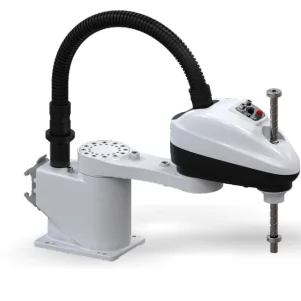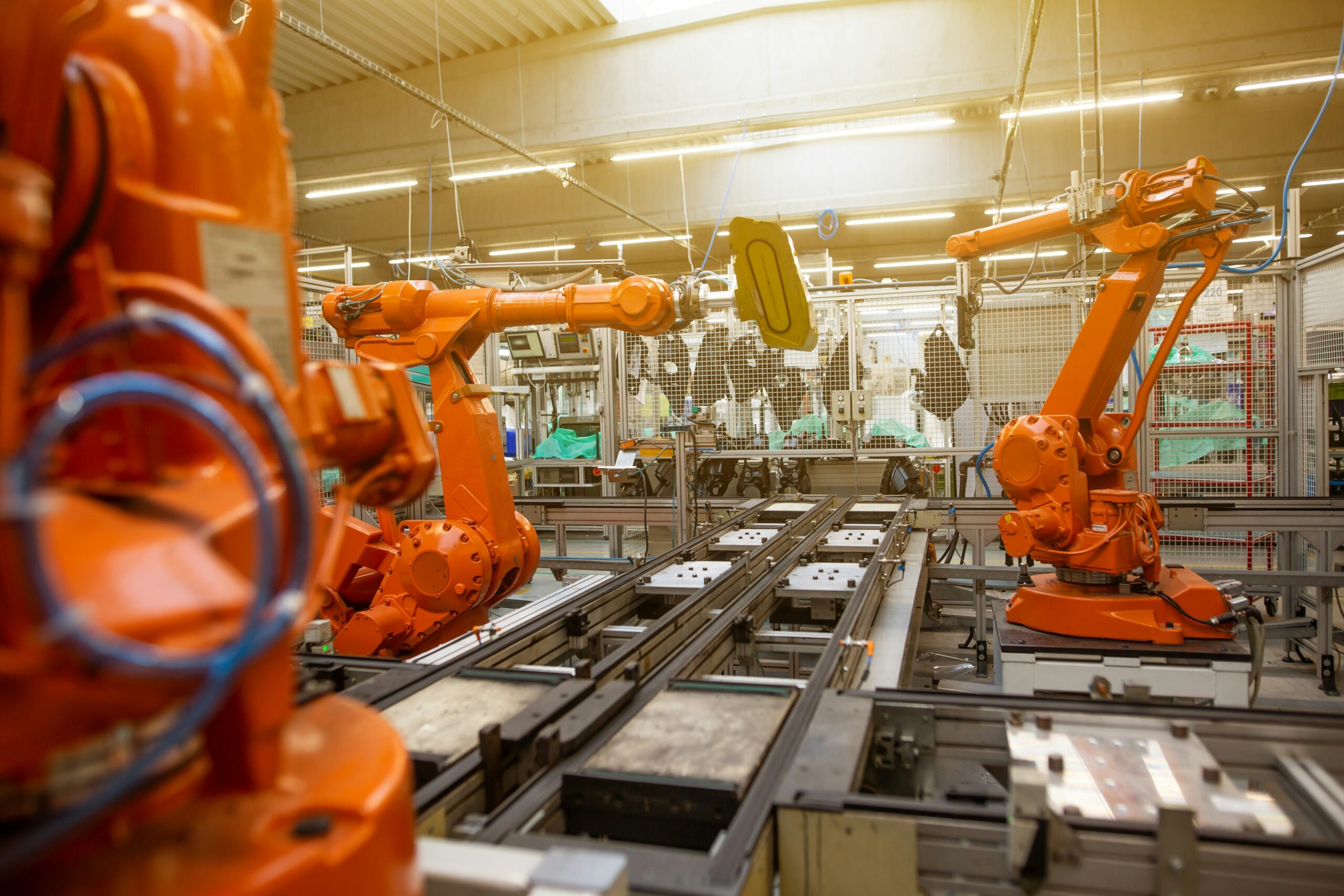Introduction
Automation is a revolutionary development in the dynamic world of modern manufacturing, reshaping production floors all over the world with increased precision and efficiency. Among the plethora of technological developments, SCARA robots have established themselves as essential instruments, particularly for jobs needing rapid speed and exact precision. The EVS3-400, a 4 Axis Universal SCARA robot, is a prime example of one such innovation that combines robust functionality with a compact design. This SCARA robot excels at a variety of tasks, from simple handling to complex assembly procedures. Its maximum reach is 400mm, and it can carry a 3kg payload. Adoption of robotics in manufacturing underscores its widespread use, where reliability, efficiency, and flexibility are essential.
Understanding SCARA Robots
What are Scara Robots?
SCARA robots, defined by their Selective Compliance Articulated Robot Arm design, are primarily known for their unique arm layout and rotational capability, which enable precision and speed in operations. The term SCARA signifies both the robot’s flexibility in horizontal movements and its rigidity in vertical operations, making it ideal for tasks such as assembly, where horizontal precision is critical. The four axes of these robots allow for a wide range of movements—from side-to-side, to up-and-down, and circular motions—catering to a variety of intricate tasks within manufacturing setups.

Technical Specifications and Features
Diving deeper into the specifications of the EVS3-400 model highlights what makes SCARA robots so valuable in industrial applications. This model boasts a first and second axis repeat positioning accuracy of ±0.01mm and a maximum speed of 720°/sec, making it one of the fastest in its class. Such specifications are crucial for high-speed assembly lines in electronics and consumer goods manufacturing, where every millisecond counts. The robot’s ability to handle payloads from 1kg to a maximum of 3kg provides the versatility needed to adapt to various products and components, from delicate electronic devices to more robust mechanical parts.
SCARA Robots in Action
Primary Applications in Manufacturing
The applications of SCARA robots in manufacturing are vast and varied. In the electronics industry, particularly in 3C (computers, communications, and consumer electronics), SCARA robots like the EVS3-400 are fundamental in performing precision assembly, handling, and sorting of small, sensitive components. Their speed and accuracy ensure high throughput and reduce waste by minimizing errors. Similarly, in automotive manufacturing, these robots expedite the assembly process by quickly and efficiently performing tasks such as screw driving and parts placement, which are pivotal during the assembly of intricate electronic systems within vehicles.

Enhancements Through Technology
New applications for SCARA robots have been made possible by their integration with cutting-edge technologies like vision systems. By enabling real-time adjustments based on visual feedback, these systems help robots become even more accurate and functional. For example, a SCARA robot with vision capabilities can identify and classify products according to their size, color, or barcode information during sorting operations. It can then carry out the handling process with specialized precision. This adaptability not only boosts efficiency but also expands the potential use cases for SCARA robots in industries requiring high variability in product handling.
Case Studies and Real-World Applications
Industry-Specific Deployments
Real-world applications of SCARA robots provide concrete evidence of their effectiveness. For example, in a recent deployment, the EVS3-400 was utilized in a high-volume production facility specializing in consumer electronics. Here, the robot played a crucial role in the fast and precise assembly of complex smartphone components. The impact of the SCARA robot on operational efficiency was demonstrated by the considerable reduction in assembly time and production costs that followed from its reliable and accurate component placement.

Comparative Analysis with Other Robotic System
Because of their speed and accuracy in particular planes, SCARA robots are frequently a better choice for specific manufacturing tasks when compared to other robotic systems like six-axis robots or collaborative robots (cobots). When it comes to assembly tasks, SCARA robots outperform six-axis robots in terms of flexibility and range of motion, but they also move more quickly in both linear and circular directions. However, collaborative robots are better suited for settings where humans and robots work side by side because they are made for direct human-robot interaction.
Conclusion
Automation of contemporary manufacturing processes has proven to be a crucial function of SCARA robots. The ability of the manufacturing sectors to compete in the global market depends on these robots because they increase output, reduce errors, and provide unparalleled flexibility. SCARA robots will continue to be essential parts of contemporary industrial automation as technology develops and their capabilities increase.
A viable option for manufacturers seeking to boost their output is to invest in SCARA robots. Their numerous advantages in a manufacturing environment include higher-quality products being produced, lower operating costs, and increased productivity. To find out how SCARA robots can be tailored to meet specific industry requirements and integrated into existing production lines for maximum benefits, prospective users are advised to consult with automation specialists.
